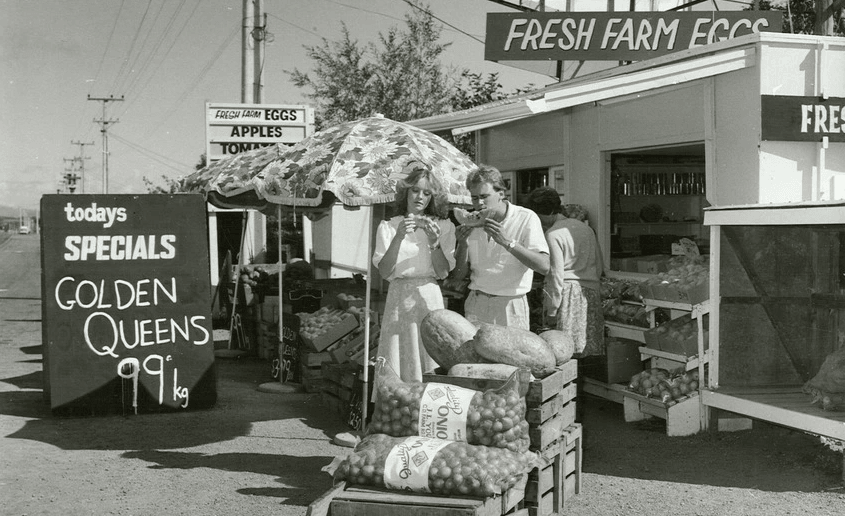For the final week of the Kia Mau festival, we review holding fun-erals for dead nannies and a speed-cycle history of Asian-New Zealand theatre. (We were going to see more shows, but the flu took us out.)
Read reviews from week one here.
Tūī Girls
Tūi Girls starts as you walk in – tea and biscuits laid out on a table, Manaia and Dee play on the floor of the stage as you take your seat, speakers pump out classic Māori jams. You’ve been here before. It’s in the Basement Theatre, but the set design has been executed perfectly, you feel just like you’re in Nan’s shed. The thing is, Nanny’s dead. But, luckily for her mokopuna, Tess, Nita, Manaia, and Dee, her wairua stays a bit longer before her journey back to Hawaiki, her ancestral homeland.
In this coming-of-age, the girls grapple with identity, grieving their nan, and the age-old question: what happens when you die? Tarsha Te Rure is outstanding as Nanny, her chemistry with the cast is undeniable. The cast and crew did brilliantly to create an immersive experience – you really felt as though you were part of their whānau. My takeaway from this is distilled in what Nanny said on the importance of vulnerability.
Don’t be afraid to show your whānau that you love them, don’t be afraid to be open and share your stories. I’ll hug my whānau tighter when I see them next, I may not be as lucky as the girls are to spend those extra moments with them before they head off to Te Rerenga Wairua. So, get you a cuppa, a bikkie, and a tissue – you’re gonna need it! /Taipari Taua
A Short History of Asian New Zealand Theatre
It took around 150 years after the first major wave of Asian immigration to Aotearoa in the 1860s before the first Asian-New Zealand mainstage play, Kā-Shue, opened in 1996. That was the first major Chinese-New Zealand play – the first mainstage Indian-New Zealand play was Krishnan’s Dairy in 1998, the first Cambodian-New Zealand mainstage play was Neang Neak’s Legacy in 2013, the first Filipino-New Zealand major play was Pinay in 2019, and so on, and so forth.
All of this to say, the history of Asian New Zealand theatre is short, still full of firsts, and at times, so expansive it seems hard to define, and yet, often still so restricted by the fact of existing in a Pākehā society. Nathan Joe’s show is a performance essay which speed-cycles through this history in 10 exercises, exploring not only the plays that have formed the canon of Asian-New Zealand theatre, but also the tensions and aspirations that exist when you create something to fill an absence.
And the cycling is very literal – the staging is just a stationary push bike powering a couple of lamps above and below, in front of a presentation of the performance, like a spin cycle class set in a lecture hall. And while Joe has performed ASHOANZT himself, he has also invited other Asian playwrights and actors to lead it as well, and on Thursday night I caught Dawn Cheong take on the challenge of cycling for 60 minutes while performing a script she was only reading for the first time.
While the script is mostly Joe’s narrative and takes, there were questions written in for Cheong to answer, like rating her love for theatre as it stands currently (“right now, it’s a solid five”), and chances to share anecdotes from life as an Asian actor, like that time a Toi Whakaari lecturer tried to imitate the shape of her eyes and insinuate that all Asian women are flirtatious. Or that time her mother died, and how reading old songs and books from your childhood can make you feel whole in your grief, or the importance of letting younger Asian creatives go through the rite-of-passage of writing about their homeland.
This feels strange to say after digesting so much of the personal sacrifice felt by Asian creatives in having their work recognised (like, thanks for suffering for the sake of art, I guess!), but I was very grateful to have seen this show and be afforded these insights. It’s funny to think that the same issues discussed among Māori creatives – How much of my personal history do I offer to this? How far do we lean into stereotypes? How far do we run away from them? Why does everyone want to tell stories about homecoming, like surely there’s something else going on, right? But also, how do we still appeal to Pākehā? – are the same issues being discussed by Asian creatives.
At the end of the day, we’re all vying for Pākehā funding, Pākehā awards, Pākehā approval. It’s a cycle that, like Cheong, often leaves you tired, sweaty, achey and just over it. And yet, there’s still beautiful art to be made out of it. /Lyric Waiwiri-Smith








